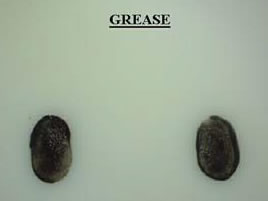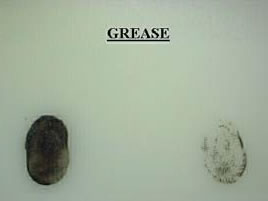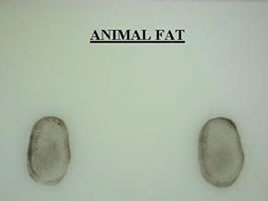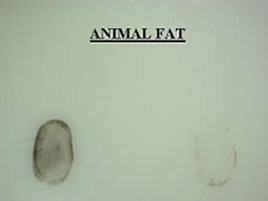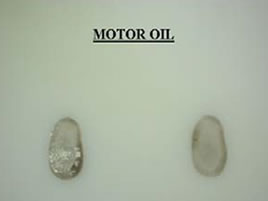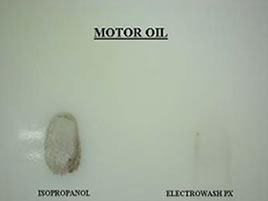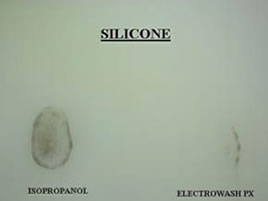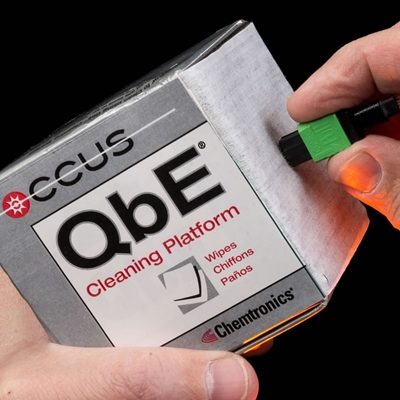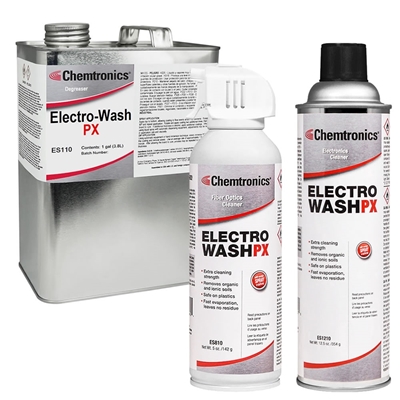As telecommunications companies upgrade and expand their fiber optic networks networks and plan for Fiber-To-The- Home (FTTH) to accommodate high speed Internet access, the need for an effective, repeatable and cost-effective means of cleaning optical fiber connections becomes essential. Traditional cleaning methods, lack of formal cleaning procedures, and the misuse or overuse of cleaning products can result in signal degradation. A newer cleaning method has been proven to be more efficient and cost effective.
Growing consumer demand for high-speed Internet access is anticipated to expand wellbeyond existing capacity. Effectively cleaning fiber optic connections is essential to assuring trouble-free transmission of the full spectrum of data, Internet and video services required.
To allow high-speed connections, engineers have created a broad assortment of mechanical ferrule connectors and alignment sleeves. However, these connectors can present a new set of cleaning problems. As many as 70% ofall transmission problems are caused by soiled connectors. Not all technicians and engineers are aware that end faces must be cleaned each time a connection is made. Soils from many ambient sources, unless they are completely removed, can accumulate on the end faces and other parts. These soils can cross contaminate other connectors, causing measurable signal deterioration.
Problems with Current Cleaning Processes
Even for those technicians where cleaning end faces is standard procedure, there is still controversy regarding the best method of cleaning. Some advocate for a dry cleaning technique using lint-free fabrics, while others prefer a wet cleaning process, which employs a solvent cleaner. However, both techniques have drawbacks. Manufacturers of cleaning devices sometimes misstate claims and rarely detail exactly how their products should be used.
For example, the recommended “twist and turn” scrubbing motion in dry cleaning can result in scratches that induce signal loss or signal deterioration. The “figure-8 motion”, used for end face polishing, should never be used for end face cleaning. This motion can create excessive lint and damage the end face.
Although a wet cleaning process largely avoids those issues of scratching, the solvent can present its own problems. Even the highest grade of 99.9% IPA is unable to remove both ionic and complex non-ionic contaminants such as buffer gels or lubricants. Using excessive amounts of IPA can also contribute to signal loss through a phenomenon known as ‘haloing”, which is thought to be residual alcohol and ambient soils.
The use of pump spray bottles exacerbates the problem. Since 99.9% IPA is veryhygroscopic,itabsorbsanyhumiditypresentintheambient air. The resultant less-concentrated IPA will be less capable of removing oily contaminants. A pump spray container replaces product with ambient air – and the moisture it contains. In addition, many spray bottles use mineral oil or anotheroiltolubricatethepistonofthesprayer, whichintroducesanother contaminant. The cleanest delivery system is an aerosol container, containing a micro-filtered solvent that is propelled with an inert gas.
Researchers at Chemtronics have developed an entirely new means of cleaning fiber optic connections. For the first time proper techniques have been combined with precision cleaning solvents to define an effective fiber optic cleaning method. This new process overcomes the problems encountered in both the wet cleaning and dry cleaning techniques. This Combination Cleaning™ procedure utilizes a proprietary solvent that effectively removes all commonly encountered soils.
Unique Solvent System
Since IPA is the traditional chemical used for both end face cleaning and for fiber preparation before fusion splicing, it has achieved “universal solvent” status. However, use of IPA presents a number of issues: IPA evaporates slowly, and its hygroscopic nature, low volatilityand intrinsically higher surface tension can result in adhesion of microscopic particles to the end face surface. Even after drying is apparently complete, these contaminants remain bonded and affect the performance of the end face or ferrule components. Chemtronics’CombinationCleaning™ procedureincorporatestheuseof cost-effective materials to clean end faces ferrules and alignment sleeves, including the full range of 2.5 mm, 1.25 mm and similar small form connectors.
To overcome the problems inherent in using IPA for cleaning fiber optic connectors, application specialists at Chemtronics recommend Electro-Wash® PX Degreaser. This product has been used in electronic precision cleaning applications since 1992. Filtered and packaged in a 5-ounce aerosol can that prevents contact with outside air prior to application, this cleaning solution effectively removes the most common types of soils. A variant of this cleaning solvent is also packaged in a pre-saturated wiper, which can be shipped by air in tool kits. To document its effectiveness, this solvent has been extensively tested in our laboratory, in side-by-side comparisons with IPA using a variety of commonly encountered soils.
Test Procedure
In order to compare the effectiveness of Electro-Wash PX Degreaser with 99.9% pure isopropyl alcohol (IPA), both solvents were tested side-by-side against four commonly encountered soil types.
A sample of each soil type was applied on two areas of a 12” x 12” x ¼” white polyethylene panel and heated for 10 minutes in a 160°F oven. The sample was then allowed to return to room temperature before initiating the cleaning test. A small amount (<10%) of LubriMatic Black Lithium Multipurpose Grease was added to the clear or uncolored soils for better visual observation of the soil and to emulate the “real world” problem of complex soils.
Initially, one side of each board was sprayed with IPA for 5 seconds, while the other side was sprayed with Electro-Wash PX for 5 seconds. Since each soil type was completely removed by the Electro-WashPX after a 5-second application, the spray time was reduced to 2-3 seconds in order to better differentiatetheactionofthe twocleaners.Thetestresultsforeachcleaneroneachsoiltype werethen documented.
|
Soil prior to cleaning |
Soil after cleaning |
Figure 1. Multipurpose Grease – LubriMatic #11316, a high-density black lithium grease, similar to lubricating greases. This is a “worst-case” cleaning application scenario.
|
Soil prior to cleaning |
Soil after cleaning |
Figure 2. Animal Fat – Armour Lard, which is used to represent the type of grease contamination caused by fingerprints, handling greasy foods (like french fries).
|
Soil prior to cleaning |
Soil after cleaning |
Figure 3. Motor Oil – Quaker State 10W 40 motor oil, which is used to represent the type of light machinery lubricating oils that may be encountered in conjunction with dusty residues.
|
Soil prior tocleaning |
Soil after cleaning |
Figure 4. Silicone Oil – Dow Corning SF96100, which is similar to the type of contamination from Buffer Gel or Pulling Lubricant, used in cable installation operations.
For each of the four samples, 5-second spray of the IPA (99.9%) only partially removed the soil (50%). However, more than 90% of each soil type was removed by the Electro-Wash PX Degreaser after only a 2-3 second spray. These results demonstrate the exceptional cleaning performance of Electro-Wash PX for a wide range of soils.
The Combination Cleaning Procedure
Development of an effective cleaning solvent was critical to overcoming the drawbacks of a wet cleaning process, but this solved only half the problem. In order to prevent damage to the optical fiber end face during the cleaning process, Chemtronics researchers developed an entirely new cleaning tool – the QbE® Cleaning System.
Traditionally, dry cleaning used a spooling device, containing a cleaning tape, which slides over a non-replaceable neoprene platen. Opening a sliding door positions a small area of cleaning tape within a narrow slot. The fiber end face is then drawn across the tape surface exposed within the slot.Although a fresh section of tape is presented for use with each opening of the sliding door, the only practical way to make efficient use is to use a “twist and turn” motion as one draws the fiber end face across the cleaning surface. This twisting motion can scratch the end face and does not always remove complex soils. Using cleaning solvents with these usually results in over-saturation of the fiber connector.
In addition, the neoprene platen can harden over time, due to plasticizer loss caused by natural atmospheric degradation and wear and tear. This harder surface could damage the optical fiber.
End face contaminants, which include dust, can bemor eeffectively removed using Combination Cleaning™ procedure. In this, where the end face is moved from “wet-to-dry”, using a smooth, unidirectional cleaning stroke over the larger cleaning surface provided by the QbE Cleaning System. This process incorporates a small amount (<1ml) of cleaning solvent, with an “automatic” drying process.
The QbE Cleaning System consists of 200 individual sheets of non-linting material. Each sheet is 3 inches square. This ample surface area encourages technicians to use a long cleaning stroke in only one direction, with no twistingor “back and forth” motion, which could result in scratching of the end face. Each fabric sheet slides over the platen so there is always a new cleaning surface for use. When empty, the box and platen is discarded, and a new QbE cleaning unit is opened. There are no costly cleaning tape spools to replace.
To clean an end face using the Combination Cleaning™ procedure, the technician sprays a quarter-sized spot of Electro- Wash® PX Fiber Optic Cleaner onto one corner of a QbE cleaning sheet. The optical fiber end face is moved from the wet area of the sheet, across the dry portion of the material. Because the lint-free QbE sheet has such a large surface area, it lends itself to using a long, single direction stroke rather than an abrasive twist and turn motion.
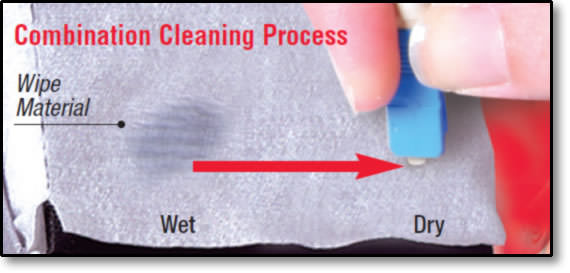
As in any cleaning procedure, the end face is then checked with a fiberscope or other inspection device, and the cleaning procedure repeated if necessary. As the soiled sheet is discarded,a new sheet is drawn over the platen, giving a clean surface for further use. Technicians report that the low cost oftheQbE allowsthemtouseacleansheetforeachendfacetobecleaned.The Combination Cleaning™ procedure is so efficient that many technicians report that the number of post cleaning fiberscope inspections is reduced.
Chemtronics researchers developed the QbE Cleaning System to be highly effective with either wet or dry cleaning techniques. Dry cleaning is acceptable when it can be verified that the contaminant to be removed does not contain potentially abrasive dust. The QbE Cleaning System and the Combination Cleaning™ procedure should be used whenever the contaminant is more complex or when visual inspection of the end face is not practical.
Conclusion
The QbE Cleaning System offers more complete removal of microscopic contaminants, with far less likelihood of damage to the optical fiber end face, than conventional cleaning methods. Because the solvent is so effective, complex soils are completely removed. Finally, since the end face is being drawn from wet to dry along the surface of the lint-free cleaning material, all contaminant residues are captured within the weave of the QbE sheet. Electro-WashPXDegreaserofferstheadvantageofevaporatingmorecompletelyandrapidlythanIPAand of cleaning far more soil types. The Combination Cleaning™ procedure combines the best features of both the wet and dry cleaning techniques to create a new process, which is superior to either.


